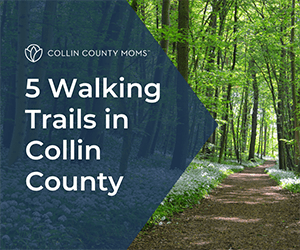
One of our children was recently diagnosed with a food allergy. The diagnosis left me both relieved and panicked. I was relieved to hear that his symptoms and discomfort had a cause. But more than that…I was panicked. No one else in our family had this allergy, and it was going to radically change the way we eat and grocery shop.
As we’ve stumbled through the last several months navigating this new world of our child’s food allergy diagnosis, we’ve finally found our stride. Here are a few things that have helped us find our footing.
>> JOIN TODAY :: Food Allergy Moms of Collin County <<
Food Labels are Your New Best Friend
All I have to say is thank God we live in 2021. I’m not sure when allergen statements became required on food labels, but I’m beyond grateful that they are there now. With certain allergies, like milk for example, there will be some products that are just a given no: yogurt, cheese, etc. But in many cases, the milk is hidden in ingredients like whey or casein.
Thankfully, if those products are used in a food, milk will be listed in the allergen statement so you know to avoid it. These statements list all common food allergies: egg, wheat, soy, peanut, milk, etc., so as long as the allergy you’ve discovered isn’t something off-beat like pineapple, these labels will become quite important!
Get to Know Natural Grocery Stores
Another reason I’m thankful to be navigating this in 2021 is all the allergy-friendly food options available to us! I have found that some of the more natural grocery stores, such as Sprouts, Whole Foods, or Central Market, offer some fantastic allergy-friendly products that are comparable or even better than some of the more mainstream options.
Take vanilla wafers, for example. The traditional “Nilla” brand includes a milk product, but the Sprouts version of the same product does not. A simple switch removes the problem, and the child does not feel as if he’s missing out.
Many of these stores offer a plethora of gluten-free, dairy-free, and egg-free (or vegan) alternatives to some of your family’s favorites.
>> RECOMMENDED RESOURCE :: Food Allergy Resources and Support for DFW Families <<
Consult an Allergist
For peace of mind, we consulted an allergist after a blood test, though his pediatrician confirmed the initial diagnosis. Because his allergy was somewhat severe and caused both eczema flare-ups and digestive problems, we wanted to discuss treatment options.
One of the things the allergist can do that I was grateful for is a skin test. A skin test can help determine whether or not a food allergy is severe enough to warrant the need for an Epi-Pen. Thankfully, our son’s allergy is not anaphylactic, but that is best left to the professionals to decide.
Additionally, the allergist helped us create a plan for his diet and gave us some strategies to help him hopefully outgrow this. Many food allergies lessen with age, and allergists can provide options to help speed that process along.
Enlist the Rest of the Family
Food allergies affect everyone in the family, especially siblings. It can be hard for them to understand why they get to enjoy something like a cookie when their brother cannot. My best advice is to rope them in! Help them understand that while sharing their cookie with their brother is a very sweet and generous thing to do, it can make him sick. This is also a particularly helpful strategy if one of your children is the whistle-blower of the family. My daughter has brought to my attention several moments where her brother was reaching for something he can’t have. She feels very helpful and like she’s part of the team that keeps him safe—a huge win for everyone!
Think Outside the Box
I’ll admit—my first thought when we got our son’s diagnosis was, “Well, dang. What are we going to eat now?!” While it’s tempting to look at a food allergy with a scarcity mentality and think only of all the things you cannot eat, I’d encourage you to make a list of all the things your child CAN eat. Maybe your family can do rice with meatballs tonight instead of pasta. Or oven-roasted potatoes with your grilled chicken instead of mashed. Maybe this is a good opportunity to try something new, like couscous or quinoa. Whatever the adjustments are that need to be made, treat it like a game. Hype it up. The results may be even better than you expect!
Have you navigated a child’s food allergy diagnosis? We’d love to hear from you! Drop your best tips and tricks in the comments!















